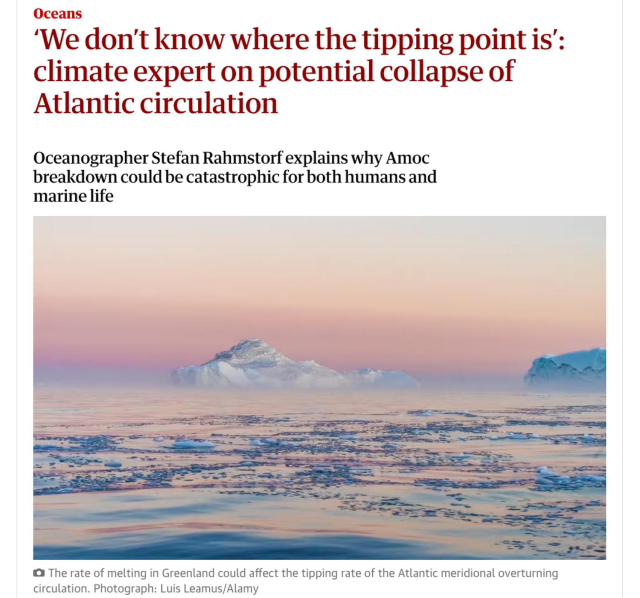What is "Amoc" and why is it so important?
_________________________________________
The dangers of a collapse of the main Atlantic Ocean circulation, known as Amoc, have been “greatly underestimated” and would have devastating and irreversible impacts, according to an open letter released by 44 experts from 15 countries.
There are indications that Amoc has been slowing down for the last 60 or 70 years due to global heating. The most ominous sign is the cold blob over the northern Atlantic. The region is the only place in the world that has cooled in the past 20 years or so, while everywhere else on the planet has warmed – a sign of reduced heat transport into that region, exactly what climate computer models have predicted in response to Amoc slowing as a result of greenhouse gas emissions.
Another indicator is a reduction in the salt content of seawater. In the cold blob region, salinity is at its lowest level since measurements began 120 years ago. This is probably linked to Amoc slowing down and bringing less salty water and heat from the subtropics.
It is an amplifying feedback: as Amoc gets weaker, the oceans gets less salty, and as the oceans gets less salty, then Amoc gets weaker. At a certain point this becomes a vicious cycle which continues by itself until Amoc has died, even if we stop pushing the system with further emissions.
The big unknown here – the billion-dollar question – is how far away this tipping point is. It is very difficult to answer because the process is non-linear and would be triggered by subtle differences in salinity, which in turn depend on amounts of rainfall and cloud cover over the ocean as well as Greenland melting rates. These are hard to model accurately in computers so there is a big uncertainty relating to when the tipping point will be reached.
_________________________________________
FULL ARTICLE -- theguardian.com/environment/20…
#Science #Environment #Climate #ClimateChange #ClimateCrisis
